There’s such a lot of competition at the upper end of the smartphone ranks that it can be tough to choose which one to go for.
So we’ve rounded up six of the best phones we’ve had the pleasure of playing with lately, with the aim of finding the one true winner and deserving holder of the title “The best of the best”, which we hope will help you make that tough final decision.
iPhone 6s
Oh, how things changed when Apple released the iPhone 6s. At least, that was the claim from the Cupertino colossus.
Mind you, the changes to Apple’s premier handset were, admittedly, quite appealing. For example, the 4.7inch 750x1334p retina display is still as crisp and clear as its predecessors.
You’ll also be touching that display a lot more thanks to the new 3D Touch feature. It’s best to think of this as a right-click of sorts, giving you quick access to options within certain apps.
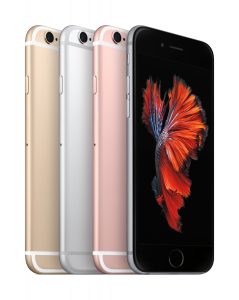
And by simply holding down an app icon, you can view a variety of options related to that app, such as posting an image from your camera roll directly to your wall in the case of Facebook.
The cameras also saw a few changes, especially the rear snapper which is a 12MP iSight sensor. Using some nifty new high-tech tricks and moving the colour filter within the sensor slightly, resulted in some of the best snaps we’ve seen from an iPhone so far.
The front shooter also got an update and now uses a “Retina flash”, which is really just a fancy way of saying the display illuminates with a warm white light to improve the look of your selfies in the dark. We did find this a bit blinding at times but it beats having terrible selfies.
Overall it’s the best iPhone yet and has us excited for what Apple’s future holds.
Best Bit: 3D Touch is a superb new feature we hope to see more of, the improvements to the camera are also fantastic.
Worst Bit: The fact that Apple still offers 16GB of storage for what is a premium smartphone.
[su_box title=”Cheat Sheet” box_color=”#f37021″]
Price Starting at R13 999 for the 16GB model
Storage 16GB/64GB/128GB
Camera 12MP (primary), 5MP (front)
Extras 3D Touch, fingerprint scanner, Wi-Fi 802.11 a/b/g/n/ac, LTE
[/su_box]
LG G5
The youngest smartphone of the bunch, the LG G5, takes a bold step in a new direction we haven’t seen from any other manufacturer.
The G5 has a modular design, which means the battery and bottom bezel can be swapped out for a replacement battery or another battery attached to something LG calls a “Friend”.
The “Friends” South Africans can choose from include a camera grip (LG Cam Plus) and a digital to analogue audio converter developed with B&O (LG HiFi Plus). Sadly, that’s all for now, even though a wider range of Friends is available overseas.
We feel like the LG G5 could have focused less on trying to be modular and more on being a high performance smartphone like its competitors.
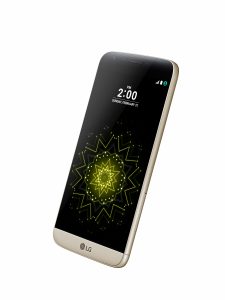
Other optional extras include a VR headset that plugs into the G5’s USB 3.1 Type C port, and the LG Rolling Bot, a small mobile camera-equipped robot that can be used to remotely watch the goings-on in your home.
Our favourite optional extra is the 360 Cam which, as the name suggests, allows you to take photos and record video in 360 degrees.
Unfortunately, only the Cam Plus is available in South Africa as of May 2016.
[su_box title=”Digital to Analogue Converter” box_color=”#f37021″]
The problem with digitally-stored music is that it is often highly compressed to save on storage space, something that can ruin the listening experience by compromising on the sound’s quality.
Analogue audio, meanwhile, remains far truer to the original audio but it degrades over time.
The way to get the best of both, then, is to output digital music in an analogue fashion with something called a Digital to Analogue Converter, or DAC, which converts digital audio signals into analogue ones via technical wizardry.
[/su_box]
We found that although the G5’s specifications are good and could theoretically compete with the Samsung Galaxy S7 edge or the iPhone 6s on paper, that was not to be in the final analysis.
The handset feels like LG was focused solely on making a phone that you could add a camera grip to or a digital-to-analogue converter for your music. That isn’t to say that the Qualcomm Snapdragon 820 inside is a slouch, though, as it placed a very close second in our benchmark array.
However, the colour of the display is slightly cooler than we like and there is no way of adjusting this. The “always on” display is a nice touch but the IPS panel is not as dark as we saw in the Samsung Galaxy S7 edge.
Back to the good points though, the wide-angle lens is a really great little tool and the quality doesn’t diminish too much when switching from wide-angle to the usual, narrower lens.
Finally, the battery life is fine, not as great as Samsung’s Galaxy S7 edge but good enough to last you through a full day of heavy use. What is nice though is that in 30 minutes you can have enough charge to last six hours.
Best Bit: The wide angle lens works really well and the modular design is a clever concept.
Worst Bit: Too much focus on the modular aspect; you get the feeling that not enough focus was placed on other areas.
[su_box title=”Cheat Sheet” box_color=”#f37021″]
Price R11 799
Storage 32GB (microSD up to 200GB)
Camera 16MP + 8MP (primary), 8MP (front)
Extras Fingerprint scanner, modular design with LG Friends, Wi-Fi 802.11 a/b/g/n/ac, LTE
[/su_box]
Samsung Galaxy S7 edge
Like the iPhone 6s, our time with the Samsung Galaxy S7 edge yielded the opinion that Samsung was finally hitting the nail on the head again.
The handset being sold here in South Africa features Samsung’s own Exynos 8890 chipset, which lashes two quad-core processors together and pairs them with 4GB of RAM. This configuration ensures that the S7 edge flies through any task you throw at it be that gaming, a bit of document editing or just binge watching YouTube videos.
Although the rear camera sensor is a relatively unimpressive-sounding 12.2MP affair, it now features phase detection so even if you’re moving images come out clear and sharp. You can even shoot 4K video at 30 frames per second.
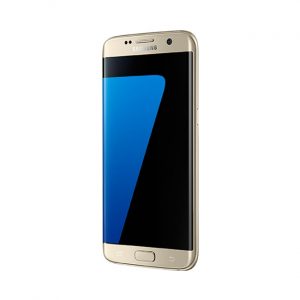
And that display. Yoh. Curves and all, it’s truly incredible. The blacks are deep and unending and colours look incredibly true to life.
Boasting a new processor, a higher resolution screen and those oh-so sexy curves, the Galaxy S7 is a return to form from Samsung.
Users are able to tweak the settings of the always-on display, too, so that they can see the time, date, messages, and calendar events at a glance without having to turn the display on or unlock the phone.
If you want to sit down and watch a movie on a long-haul flight you best pack the 32GB of internal storage with as many movies as you can find because the battery will last you a good 10 hours; more if you turn the brightness down.
You can expect to get around two days of use if you’re browsing the internet, responding to text messages, checking in on Twitter and playing the odd game.
The Galaxy S7 edge is an expensive handset but it is entirely worth the money once you get to using it and you see just how much care, attention to detail and – dare we say – love, went into making this smartphone.
Best Bit: The always-on display is something we wish we would have thought of and should become a standard feature across brands.
Worst Bit: The curved display might put some folks off, but that’s just us nitpicking. The S7 edge is a truly stellar phone.
[su_box title=”Cheat Sheet” box_color=”#f37021″]
Price R12 999
Storage 32GB (microSD up to 200GB)
Camera 12MP (primary), 5MP (front)
Extras Fingerprint scanner, IP68 certified, Wi-Fi 802.11 a/b/g/n/ac, LTE
[/su_box]
Huawei Mate 8
Huawei’s business minded smartphone, the Mate 8, may just be good enough to start occupying the oak desks of business bigwigs.
What we really like about its 6inch, Full HD display is that Huawei has included a way to adjust the colour temperature if you find it too cool or too warm. Out of the box we found it to be just about right.
You can also shrink the screen down to a 4.5inch display so it’s easier to type with one hand while you sign off million rand deals with the other.
At the back of the Mate 8 below the small but still noticeable camera bump you’ll find a fingerprint reader which works rather well. This scanner doesn’t require that you push a button and then wait for it to scan your fingerprint, this one works with one simple touch.
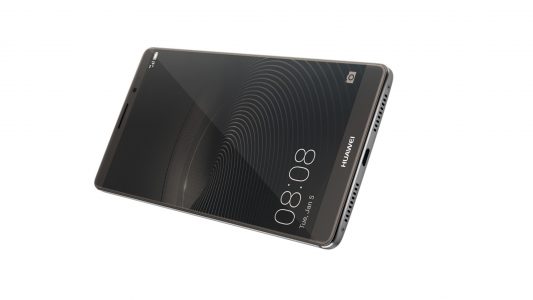
We aren’t big fans of a fingerprint scanner at the back of a handset as it makes unlocking your phone while it’s on your bed-side table, or in your hands-free car cradle, a bit of a pain. Thankfully you can also use a 4-digit code to unlock the Mate 8.
The camera is not the main attraction of this handset but the 16MP f/2.0 sensor works well, even in poorly-lit conditions.
Interestingly, the front shooter’s “beauty mode” actually scans your face the first time you use it. It basically maps your face to see where touch ups would work best and then applies that to the photo based on your preferred intensity.
For a business phone the Mate 8 performs well, and if you’ve grown bored of the offerings from the major manufacturers, the Mate 8 is a welcome change of pace.
Best Bit: The display is big but doesn’t sacrifice quality over functionality, and the camera is also a bit of a dark horse in that you won’t expect it to be good, but it is.
Worst Bit: The rear-mounted fingerprint scanner makes unlocking your phone when it’s mounted to a hands-free kit or flat on the desk a bit annoying.
[su_box title=”Cheat Sheet” box_color=”#f37021″]
Price R12 999
Storage 32GB (microSD up to 128GB)
Camera 16MP (primary), 8MP (front)
Extras Fingerprint scanner, fast charging, Wi-Fi 802.11 a/b/g/n/ac, LTE
[/su_box]
Samsung Galaxy Note 5
What really struck us while reviewing the Note 5 was how small it felt.
The handset, which has a 5.7inch display, is by no stretch of the imagination small. It is a phablet, after all, but the tiny bezels and clever design means it doesn’t feel big at all.
Unfortunately, we found the camera bump housing the 16MP sensor rather unsightly even if it does help you find the heart rate monitor without having to turn the camera around.
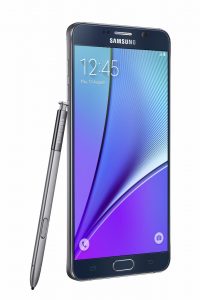
That is the only thing we hated about the camera though, the images captured are A-class but beware of blindly sharing photos – the average resolution of snaps can top out at a 5 312×2 988 resolution and a good few megabytes apiece. Thankfully, the base model of the Note 5 has 32GB of storage to accommodate those snaps.
As far as battery life goes, the 5.7inch display does drain it rather quickly. A 3 000mAh battery is present, but even it gives up the ghost after a day of light browsing, taking calls, instant messaging and navigating to that meeting you were late for.
More aggressive use leads to battery life declining in around 8 hours.
Overall though, the Note 5 is a fantastic handset, and while it is a bit expensive at almost R14 000 it does compare favourably to Apple’s iPhone 6s and even Sammy’s own Galaxy S7 edge, even if it is a bit older.
Best Bit: Despite being a phablet , the Note 5 feels comfortable in your hand, the ability to shrink the display down as well just adds to the comfort.
Worst Bit: That huge display does drain the battery rather quickly.
[su_box title=”Cheat Sheet” box_color=”#f37021″]
Price R13 999
Storage 32GB
Camera 16MP (primary), 5MP (front)
Extras Stylus, fingerprint reader, heart rate monitor, Wi-Fi 802.11 a/b/g/n/ac, LTE
[/su_box]
Blackberry Priv
Big organisations across the world have loved using Blackberry phones because of the company’s commitment to security and privacy.
While popular with management, the phones’ interfaces suffered a bit from BlackBerry’s awful operating system design that proved far less user-friendly than rival operating systems like iOS and Android.
Fortunately, Blackberry did an about-turn when it announced that its Priv handset would enjoy the same security focus and design that Blackberry and fans held dear, but powered by Android.
That classic BlackBerry design becomes apparent when you gently slide the Priv open – the slide mechanism is silky smooth and nigh-on perfect, and the phone itself feels like the high-class piece of design that it is.
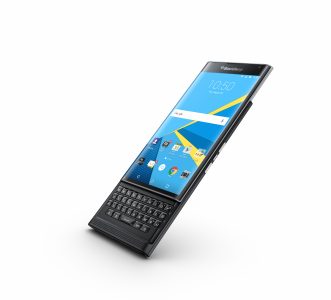
Beneath the 4inch QHD (2 560 x 1 440) display is a full QWERTY-keyboard which does more than just typing – it’s a touchpad as well.
The brain behind that keyboard is a Snapdragon 808 chipset which means you have ample LTE connectivity across most bands in South Africa and plenty of performance – perfect for business people.
But most important is the fact that the Priv’s as secure an Android phone as you could hope to have. BlackBerry’s included everything from encryption to secure authentication, and given IT admins all the tools they need to lock the phones down according to corporate security policies.
On top of that, the battery is fantastic, clocking in a full day of work without breaking a sweat before bedtime.
For those who can get over the fact that this is a R13 000+ Blackberry handset, the Priv is most certainly worthy of the price tag, especially if you’re a business person handling sensitive information.
Best Bit: The full QWERTY keyboard that doubles as a touch pad is simple yet brilliant engineering that we struggled to live without on other phones.
Worst Bit: The price: at the end of the day R13 400 for a Blackberry is s high price to pay, even with all the security positives.
[su_box title=”Cheat Sheet” box_color=”#f37021″]
Price R13 400
Storage 32GB (microSD up to 200GB)
Camera 18MP (primary), 2MP (front)
Extras Slide out QWERTY keyboard, DTEK security, Wi-Fi 802.11 a/b/g/n/ac, LTE
[/su_box]
And the winner is…
Deciding on a winner is a tough decision, but if we had to walk into a store today it would be a close fight between Apple’s iPhone 6s and the Samsung Galaxy S7 edge.
Ultimately, though, we’re pretty sure the S7 edge would pip the iPhone to the post.
There is a lot about the iPhone to love, but where it falls short, the S7 edge picks up the slack.
We strongly believe storage capacity of 32GB and batteries that last longer than a single day should be the new normal.
Add the ability to record video at 4K, LTE on all bands, a superb display and incredible attention to detail and adding the S7 edge to our cart is a no-brainer.
With that said, there are still a few more smartphones to be released. We should see the next iPhone in September because, well, we always see the new iPhone in September. The HTC 10 is also expected in June/July here in South Africa and the Xiaomi Mi 5 and Huawei P9 are likewise hitting our shores soon.
But for now, without those competing for your cash, we’re confident the Galaxy S7 edge is the best phone released so far this year, and you won’t regret grabbing one.

